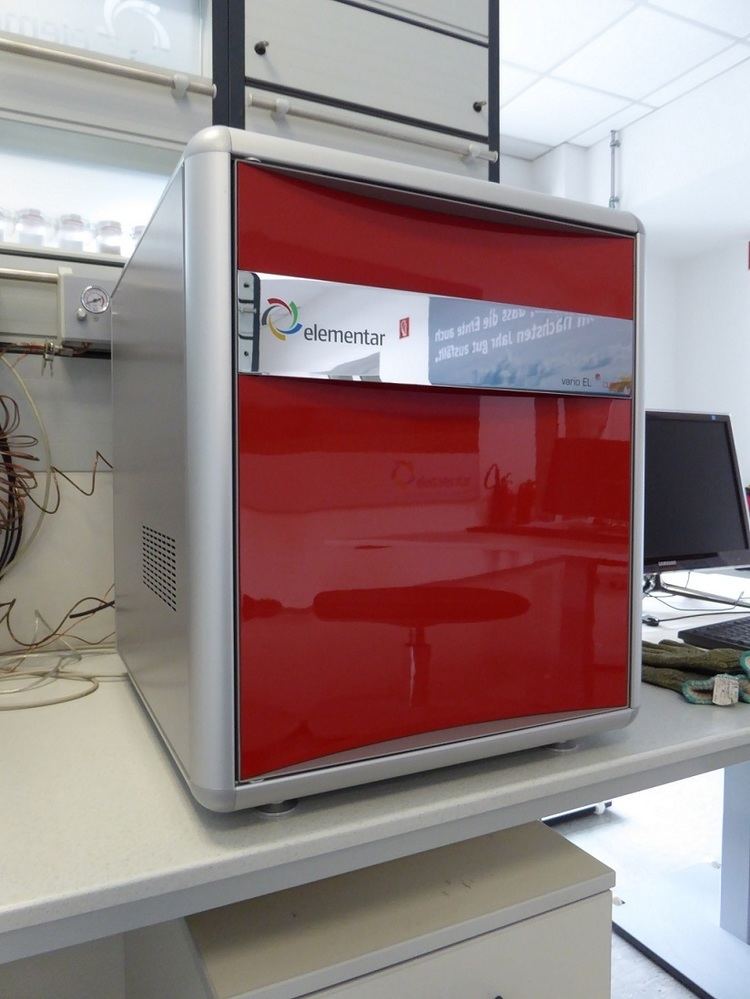 | ||
Elemental analysis is a process where a sample of some material (e.g., soil, waste or drinking water, bodily fluids, minerals, chemical compounds) is analyzed for its elemental and sometimes isotopic composition. Elemental analysis can be qualitative (determining what elements are present), and it can be quantitative (determining how much of each are present). Elemental analysis falls within the ambit of analytical chemistry, the set of instruments involved in deciphering the chemical nature of our world.
Contents
For organic chemists, elemental analysis or "EA" almost always refers to CHNX analysis—the determination of the mass fractions of carbon, hydrogen, nitrogen, and heteroatoms (X) (halogens, sulfur) of a sample. This information was very important to help determine the structure of an unknown compound, as well as to help ascertain the structure and purity of a synthesized compound. In present day organic chemistry spectroscopic technics (like NMR, both 1H and 13C), mass spectrometry and chromatographic procedures have replaced EA as the primary technique for structural determination, although it still gives very useful complementary information. It is also the fastest and most inexpensive method to determine sample purity.
Antoine Lavoisier is regarded as the inventor of elemental analysis as a quantitate, experimental tool to assess the chemical composition of a compound. At the time elemental analysis was based on gravimetric determination of specific adsorbant materials before and after selective adsorption of the combustion gases. Today fully automated systems based on thermal conductivity or infrared spectroscopy detection of the combustion gases, or other spectroscopic methods are used.
Methods
The most common form of elemental analysis, CHNS analysis, is accomplished by combustion analysis. In this technique, a sample is burned in an excess of oxygen and various traps, collecting the combustion products: carbon dioxide, water, and nitric oxide. The masses of these combustion products can be used to calculate the composition of the unknown sample. Modern elemental analyzers are also capable of simultaneous determination of sulfur along with CHN in the same measurement run.
Quantitative
Quantitative analysis is the determination of the mass of each element or compound present. Other quantitative methods include:
Qualitative
To qualitatively determine which elements exist in a sample, the methods are:
Analysis of results
The analysis of results is performed by determining the ratio of elements from within the sample, and working out a chemical formula that fits with those results. This process is useful as it helps determine if a sample sent is a desired compound and confirms the purity of a compound. The accepted deviation of elemental analysis results from the calculated is 0.4%.
